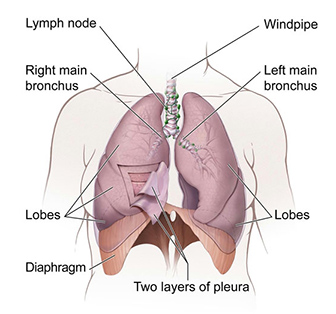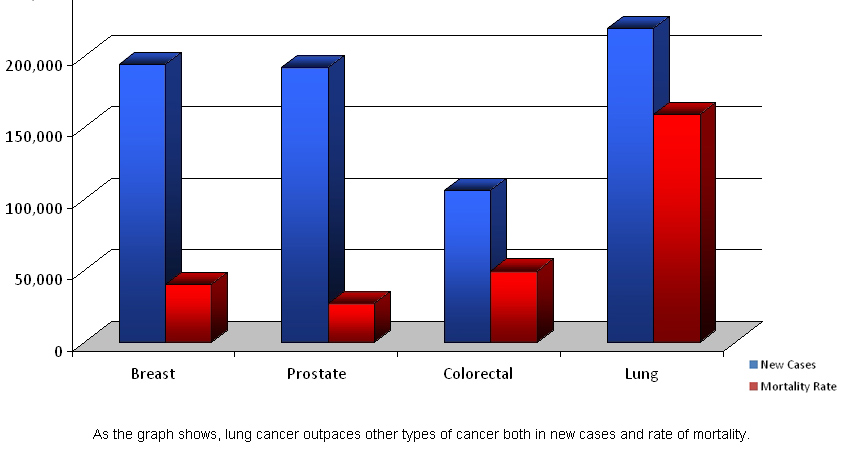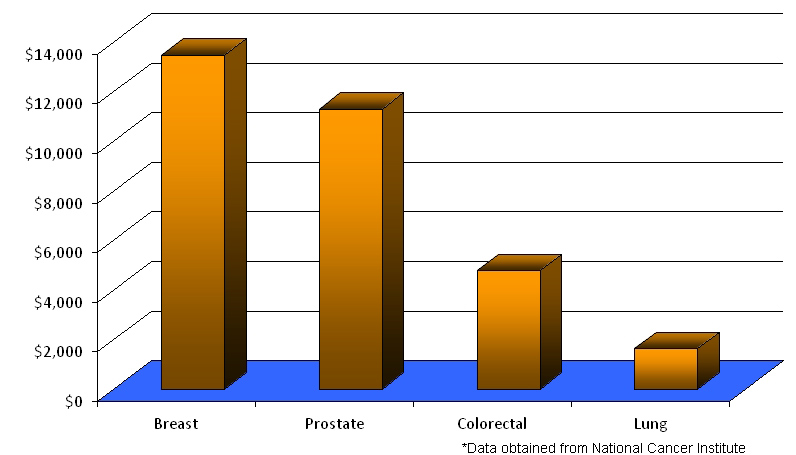The Lungs
The lungs are a pair of sponge like organs, part of the respiratory system essential for breathing, which brings oxygen into the body and gets rid of carbon dioxide. Oxygen is necessary for cells to make energy. A by-product of this process is carbon dioxide, which needs to be removed from the body. The critical oxygen-carbon dioxide exchange takes place in the lungs.
During breathing, air exits the mouth or nasal passages and travels down the main breathing tube called the trachea (windpipe) which divides into two main tubes (main stem bronchi). One division goes to the right lung (right main stem bronchi) and the other to the left (left main stem bronchi). There is further division eventually resulting in segments called alveoli.
Each lung is divided into sections called lobes. The right lung has three lobes; however the left lung has only two (to allow room for the heart). The lining around the lungs, called the pleura helps protect the lungs and allows them to move during breathing. Most lung cancers start in the cells of the lining.
Cancer is a general term that describes the state in which cells divide uncontrollably. Normally, cells grow, divide, and produce more cells to keep the body functioning properly. Abnormal cells can accumulate and form growths or masses called tumors. Tumors can be benign (not cancerous) or malignant (cancer) and can invade and destroy normal tissue. The spread of cancer cells throughout the body from the original tumor site to a new site is termed metastasis.
Lung cancer can often go undetected anywhere from three to five years. The initial changes in the body are often too microscopic for early detection and are often asymptomatic. This disease is the leading cause of cancer death in the United States.

Statistics
It is estimated that in 2009, 219,440 people in the United States will be diagnosed with lung cancer. It is estimated that within one year, 159,390 people will die of the disease. The 5-year survival rate for lung cancer continues to hover around 16% and has not significantly changed since 1971.
New Case and Mortality Figures For Various Types of Cancer*

*2009 American Cancer Society Estimates
Research Funding
2007 Cancer Research Funding per Mortality Rate*

While lung cancer is the #1 cancer killer of men and women,
research funding to find a cure of this disease is seriously underfunded.
Types of Lung Cancer
There are two main categories of lung cancer: non small cell (NSCLC) and small cell (SCLC). In the U.S. 75 – 80% of diagnosed cases are non small cell lung cancer. The different types are distinguished by cells appearance under the microscope.
NSCLC has 3 major sub types:
- Adenocarcinoma-
- represents about 40% of lung cancer cases in U.S.
- is most common lung cancer among women
- usually starts near outer edges of the lungs
- may spread to other parts of the body
- can be seen in non-smokers
- includes sub-types such as BAC – bronchioalveolar adenocarcinoma
- Squamous Cell
- represents 30-35% of lung cancer in the U.S.
- occurs most frequently in men and older people of both genders
- usually begins in one of the breathing tubes
- tends to remain localized chest longer than the other types
- Large Cell Undifferentiated carcinoma
- represents about 5-15% of lung cancer cases in U.S.
- incidence appears to be decreasing
- may occur in any part of the lung
- tumor usually rather large by time of diagnosis
- greatest possibility of metastasis to brain and mediastinum
SCLC - also called “oat cell” because of its appearance – is a more aggressive type of lung cancer compared to NSCLC.
- Represents 15-20% of all lung cancers
- Spreads to lymph nodes and other organs more frequently than NSCLC
- Diagnosed primarily in smoker or former smoker
- Usually starts in one of the larger breathing tubes
- is seemingly more responsive to chemotherapy drugs
- tends to grow rapidly

